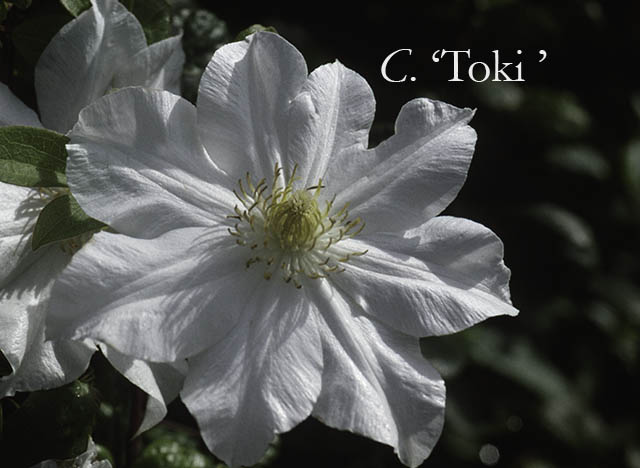The end of a hot summer is not particularly a highpoint when it comes to being out and about in one’s garden. It is, however, the perfect time to take on a project such as making labels for your most valued garden plants (such as your clematis, roses, daylilies, hostas, etc.). Some of you may ask yourself, “Why should I label my plants?”. Well, if you only have one or two special plants or your garden will never be on garden tour or you don’t have those occasional senior moments of temporary amnesia, participating in a round of “Name That Bloom” probably isn’t necessary. However, I have substantially more than two clematis and on more occasions than I would like to admit, I have forgotten the name of a clematis and/or how to spell it. Clematis ‘Blekitny Aniol’, Clematis ‘Matka Siedliska’, Clematis ‘Sizaja Ptitsia’ and Clematis ‘Södertälje’ are just a few that come to mind. There have been times when a visitor has admired a particular “baby” (a.k.a. one of my clematis) and my mind has gone completely blank concerning its identity. For those moments when my lucidity has eluded me, I can always count on my little knights in shining armor (my plant tags) to gallop in on their white steeds and rescue me, saving my royal reputation
In my garden I use tags primarily for my clematis, but I guess that is probably no surprise to my regular visitors. I suppose one could go overboard with these garden signs, so unless you have a living museum (i.e.an arboretum), I personally think labeling every plant in your garden might be a bit too much. Finding the right balance between tags being a helpful garden organizational tool and not making it appear as if you are smack dab in the middle of a botanical garden is the key. So, there is no need to tag everything that shoots out of the ground. After all, who wants their garden looking like an overly billboarded freeway?
Tags in the garden not only serve as name reminders, but they are handy to help you know where you have planted items such as your bulbs that disappear when they go dormant. However, I suggest you have a backup plan. Because sometimes a tag can go missing, don’t rely solely on your well-placed plant tags to know where a plant is located. Since I log into my computer where I plant my clematis, roses, perennials, etc., I can easily refer to it if a marker decides to perform a magical vanishing act. Hopefully, after reading this article, you will take my advice and tag your clematis and other favorite plants because if you name it you can claim it.
